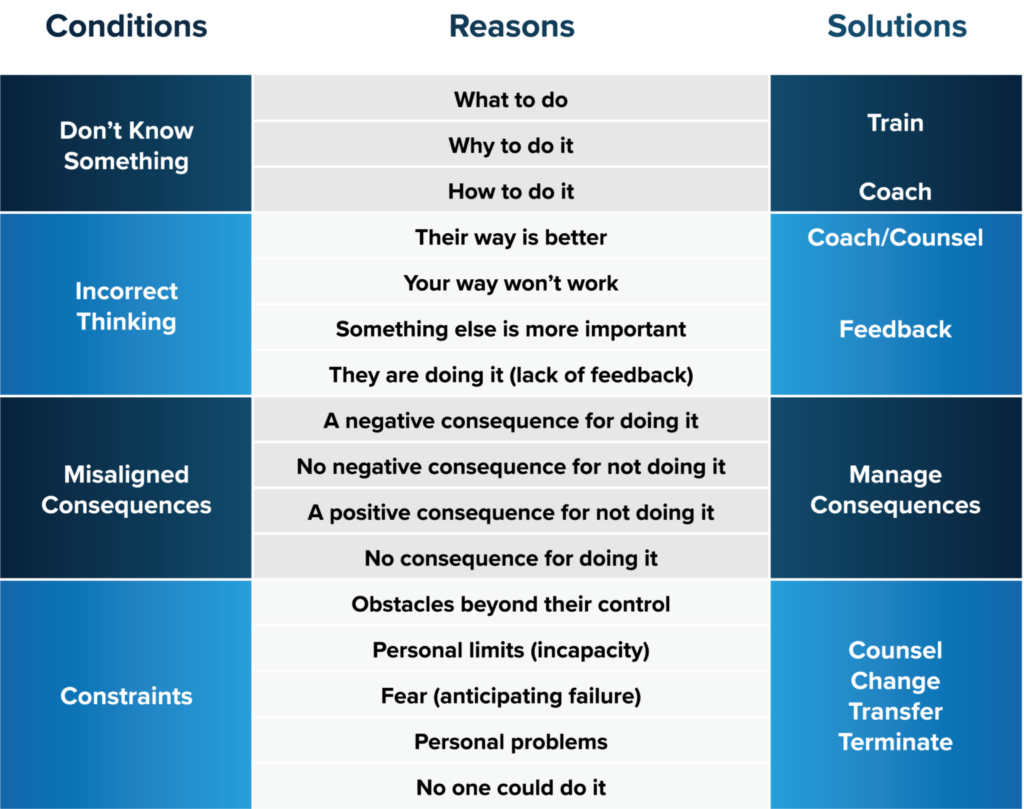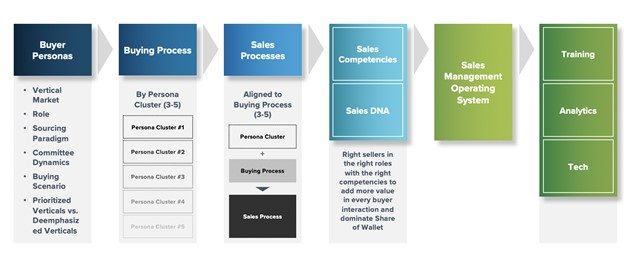Across industrial distribution, leading sales forces are hard at work innovating how they organize themselves to best serve their customers. The pandemic and working from home accelerated many of these changes, but even earlier, many companies started to question whether their approach to selling had kept pace with the times.
Many companies have launched initiatives around new sales training, sales technology (such as CRM), sales analytics, and on and on. While some of these initiatives show early promise, they frequently fall short in adoption or peter out over time — with sellers reverting to their old ways of doing things. Beyond the obvious wasted time and money in failed investments, the more pointed question of how to meet modern buyer expectations remains unresolved.
Sales Change Requires Work, But It’s Necessary
Why is it so hard to get sales teams to change? One reason is that many sales projects aimed at making a change are ad hoc initiatives that lack structure to give the team cohesion and provide a clear pathway from the old way of doing things to the new way. For companies that lack a systems approach to sales change, it may be valuable to take a step back and complete the foundational work necessary to create a buyer-centric sales transformation that looks something like the sales enablement journey depicted in the following diagram:

If you are trying to make sales changes to the right side of this chart without having done the buyer research, sales process, and seller readiness work on the left side, you have a systems problem to address.
For companies that have built a properly functioning sales system like the example referenced, but still struggle to get adoption of key changes in tools, training or technology, it’s probably time to drill down a little deeper into the organizational dynamics that support or inhibit change.
Sales Change Management is Possible with the Right Framework
To successfully implement sales change management, sales leaders and managers must make the changes before introducing them to front-line sellers. Sales leadership’s daily behaviors and beliefs are the foundation of the sales team’s daily behaviors. Any sales change initiative that doesn’t cement the changes with leaders and managers first will struggle with adoption. If the leaders don’t change their daily behaviors, they will be tacitly condoning inertia.
The opposite of the scenario described is an early, focused initiative to get 100 percent buy-in and adoption of the change with the sales leaders — before any communication or engagement with front-line sellers. Once the staging strategy is in place, managers will still need to overcome resistance, but they will do so from a position of strength.
One of the more valuable frameworks I’ve come across is based on the work of consultant and author, Ferdinand F. Fournies. The framework answers the big question behind frustrations in change management: Why won’t people do what we ask them to do?

Address Underlying Reasons That Unravel Sales Change
In the framework by Fournier (which can be applied to leaders, managers or front-line sellers), there are four key causative conditions that inhibit change, each with root causes and implied solutions.
Essentially, most change management initiatives fail due to one or more of the four underlying conditions:
- Those whom we are asking to change don’t know something: What, why or how to do the action or act.
- Individuals have incorrect thinking about the sought changes: The old way is better, the new way won’t work, something else is more important, or that they are doing it (when they actually aren’t).
- Consequences are misaligned: nothing positive or negative results from success or failure at making the changes.
- Constraint in ability to change: There is a lack of time, bandwidth, courage, mental state, or even true feasibility of accomplishing the sought changes.
Each of these root-cause conditions and clusters of reasons have distinct remediation pathways.
Resolving the knowledge gap about the change
For someone who doesn’t know what to do, why to do it differently, or how to make the change, focused training and coaching is the pathway to success. People can only make the changes they know how to do. Setbacks here are the most basic cause of non-change.
Resolving incorrect thinking regarding sales change
Assuming that an individual knows what, why, and how to do the desired change, the next layer of resistance involves incorrect thinking.
Here, the individual believes one or more of the following:
- Their way (or the old way) is better than the requested change
- The new way won’t work
- Something else is more important (than adopting the requested change)
- They are actually making the desired change (when they’re not)
The prescription for this condition is to coach and counsel to debunk mistaken, contrary beliefs. Misinformed thinking prevents someone who knows how to make the desired change from actually making that change on a consistent basis.
Resolving misaligned consequences related to sales change
Once our sellers know what, why, and how to do the desired change — and we’ve coached and counseled out any contrary beliefs — our next checkpoint is incentives. We want to make sure that the spoken and unspoken incentives facing sellers reward the adoption of the desired change and penalize non-adoption. If there are no positive or negative consequences of adoption vs. non-adoption of the desired change, sellers who know and believe in the desired change still may not cease the old ways to adopt the new ways of doing things.
Resolving constraints that inhibit sales change
Finally, assuming sellers 1) know what, why, and how to change; 2) believe in the need to change; and 3) are incentivized to do so, we reach the final layer that can inhibit sales change. Constraints to sales change include: time, bandwidth, emotional or personal challenges, or the inability of the individual to actually make the desired change. At this point, determine the best actions to alleviate constraints.
Determine What Needs to Change and Then Manage It
One of the essential roles of leadership is to determine what needs to change, and then to actually drive and manage the needed changes to fruition. Once we have a framework for understanding the root causes of resistance to change, we can holistically create change management plans that anticipate and resolve those challenges.

